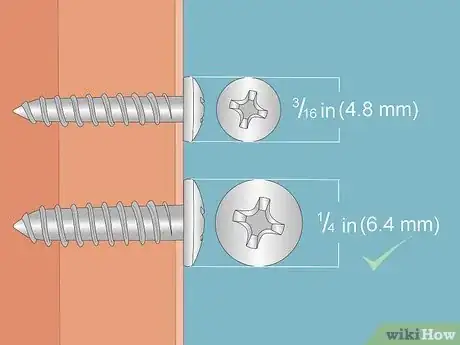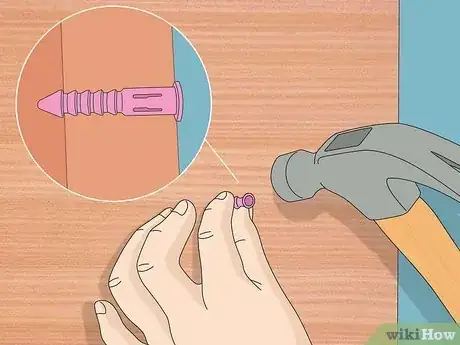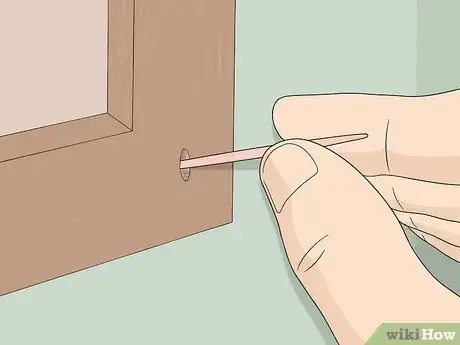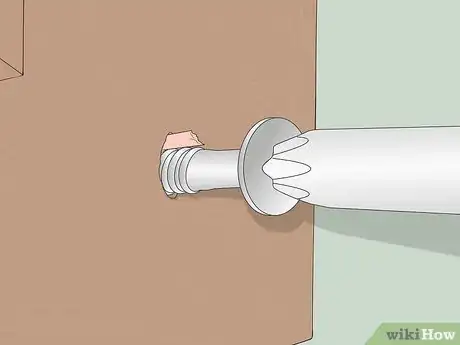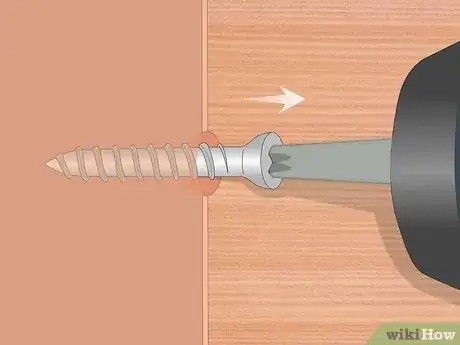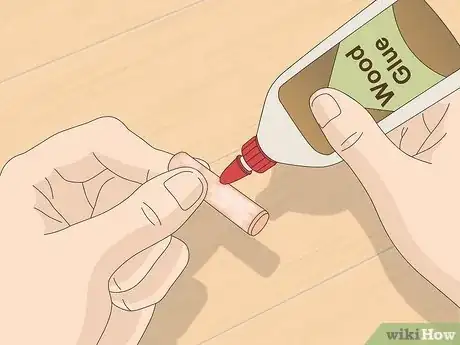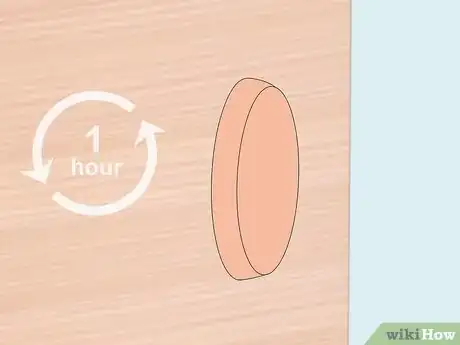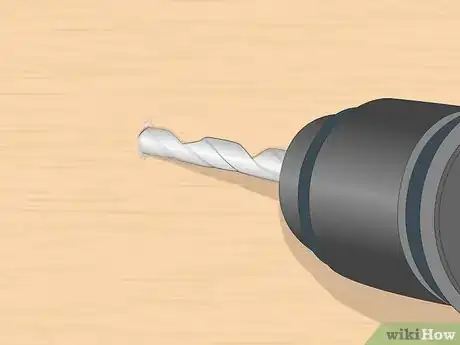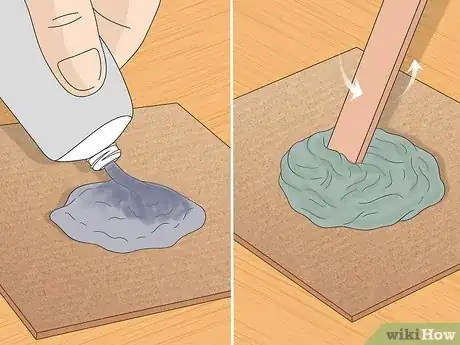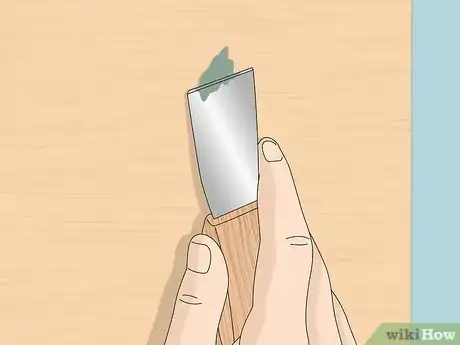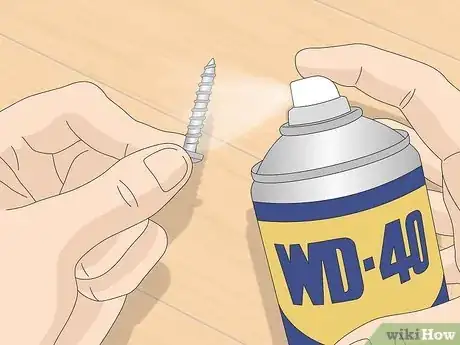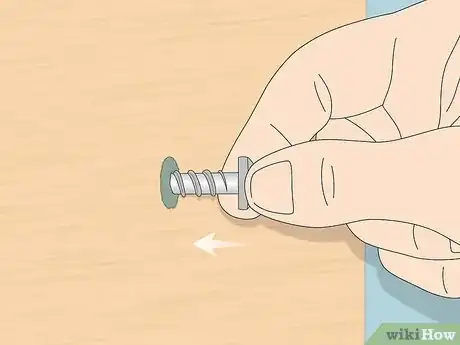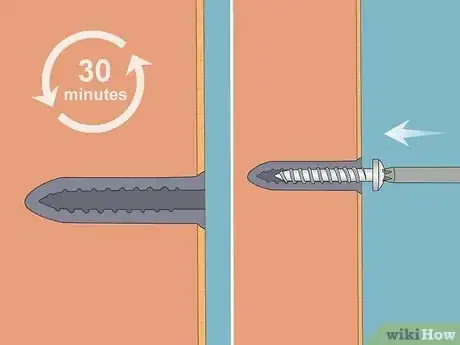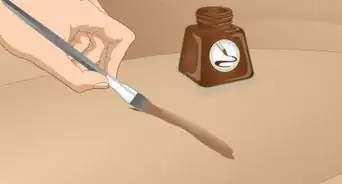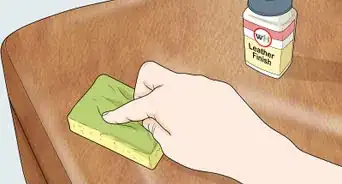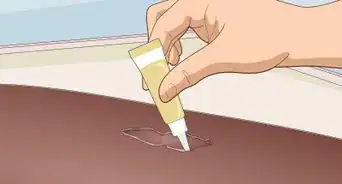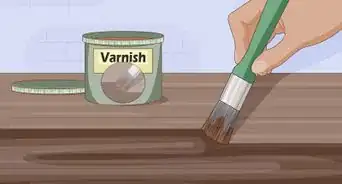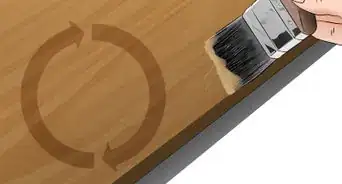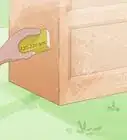This article was co-authored by wikiHow staff writer, Christopher M. Osborne, PhD. Christopher Osborne has been a wikiHow Content Creator since 2015. He is also a historian who holds a PhD from The University of Notre Dame and has taught at universities in and around Pittsburgh, PA. His scholarly publications and presentations focus on his research interests in early American history, but Chris also enjoys the challenges and rewards of writing wikiHow articles on a wide range of subjects.
There are 8 references cited in this article, which can be found at the bottom of the page.
This article has been viewed 72,427 times.
Learn more...
No doubt about it—it’s super frustrating to have a screw that just spins in the hole when you’re trying to tighten up a door hinge or a table leg. But don’t let a loose screw make you feel like you have a screw loose—instead, check out all the “screw fixer” options we’ve provided below. In minutes, your loose wood screw problem will be a thing of the past!
Things You Should Know
- Replace the loose screw with a longer and/or wider one for the quickest and simplest fix in many situations.
- Push a plastic anchor, wooden dowel, or toothpicks into the opening to re-use the same screw by giving it a tighter grip.
- Fill the hole with auto body filler and embed it with the screw’s threads to make a very permanent and secure repair.
Steps
Larger Screw
-
1Use a longer screw with the same diameter. This is the simplest solution, and it usually works great! Say, for instance, you have a 3⁄4 in (19 mm) long #10 wood screw that won’t hold. The odds are good that a 1 in (25 mm) long #10 screw will hold tight in the same opening.[1]
- Choose a replacement screw that’s at least 1⁄4 in (0.64 cm) longer. If you go much longer than that, use a drill to create a deeper pilot hole into the screw hole so you don’t split the wood.
- Obviously this easy method won’t work if you don’t have a thick enough piece of wood to accept a longer screw. But don’t worry—you have many other options to try!
-
2Pick out a thicker screw with a bigger diameter. If you can’t go longer, go wider! Switching from a #10 wood screw (about 3⁄16 in (4.8 mm) in diameter) to a #14 screw (about 1⁄4 in (6.4 mm) in diameter) of the same length may give you the solid grip you’re looking for.[2]
- Test out various diameters of replacement screws until you find one that “bites” snugly into the surrounding wood when you twist it into place.
Advertisement -
3Try out a screw that’s both longer and wider. You know what they say: Go big or go home! Seriously, though, a screw that is longer than the old one and also has a greater diameter will almost certainly hold tight. Just make sure the bigger screw won’t go all the way through the wood and will fit into any hardware (like a hinge or cabinet handle) you’re using.[3]
Plastic Anchor
-
1Pick out a plastic wall anchor that fits the size of the screw. Plastic wall anchors come in a wide range of sizes, so check the packaging and pick out one that matches the length and diameter of the loose screw. (If you’re not worried about re-using the same screw, just pick out a wall anchor and a new screw that are approximately the same size.)[4]
-
2Drill out the hole, if needed, so the anchor will fit. The wall anchor obviously has a larger diameter than the screw that slots inside of it, so it may not fit into the existing hole in the wood. If the anchor doesn’t fit, use a drill bit that matches the diameter of the shaft of the anchor to widen the hole.[5]
- If the existing hole has been completely stripped out by the screw, the anchor may fit in place with no adjustment needed.
-
3Tap the anchor into the hole with a hammer or mallet. Press the anchor straight into the hole with your finger as far as you can, then tap it into place very gently with your hammer or rubber mallet. Don’t bash away at the anchor, or you’ll either break or deform it. Tap it in until the lip at the top of the anchor is flush (even) with the surrounding wood.[6]
- Some people like to add a bit of wood glue to the hole to help hold the anchor in place even more firmly. However, if you’ve picked the right size of anchor and drilled out the hole to the proper diameter, this shouldn’t be necessary.
-
4Drive in the screw to expand the anchor inside the hole. All you need now is a screwdriver to finish the job! As you twist the screw into place, the diameter of the anchor will expand and bite into the surrounding wood, locking the anchor and screw into place.[7]
Toothpicks
-
1Trim a toothpick to match the depth of the hole. Stick the toothpick all the way into the hole, mark the depth on it with a pencil, then pull it out and snap or cut it off at the mark. Follow the same process if you’re using multiple toothpicks or an alternate hole wedge like the following:[8]
- Matchsticks (with the heads removed)
- Chopsticks
- Bamboo skewers
- Thin wooden dowels
- Thin slivers of scrap wood
-
2Put the trimmed toothpick in the hole, adding glue if desired. Gluing isn’t absolutely necessary here, but it may give you some extra peace of mind to squeeze some wood glue into the hole before slipping the toothpick back into place. (If you do add wood glue, give it at least 10-15 minutes to dry before proceeding.)[9]
-
3Replace the screw and tighten it back up. With the addition of just one or a few toothpicks, the screw should bite into the wood as if you drilled a new, perfectly sized pilot hole. However, if the screw is still a bit loose, add a few more toothpicks and try again.[10]
- The toothpicks get compressed between the hole and the screw, wedging and locking the screw into place.
Dowel Plug
-
1Drill out the screw hole with a 3⁄8 in (9.5 mm) bit. Go with the 3⁄8 in (9.5 mm) drill bit for any screw hole 1⁄4 in (6.4 mm) or less in diameter. For larger holes, choose a bit that’s at least 1⁄8 in (3.2 mm) larger than the screw you’re using—for instance, a 1⁄2 in (13 mm) bit for a 3⁄8 in (9.5 mm) diameter screw.[11]
-
2Spread wood glue on the end of a 3⁄8 in (9.5 mm) wood dowel. Pick up a round wood dowel at any home improvement or craft store, or online. Spread the wood glue on the dowel roughly equal to the depth of the screw hole.[12]
-
3
-
4Wait at least 1 hour for the glue to dry. Yes, waiting for glue to dry is just as dull as waiting for paint to dry—but you gotta do it anyway! Take a walk, read a book, or get started on another DIY project.[14]
-
5Cut off the dowel so it’s flush with the wood surface. Use a utility knife or a chisel to bring the tip of the dowel flush with the surrounding wood surface. Use sandpaper to smooth out the tip of the dowel if needed.[15]
-
6Drill a 1⁄8 in (3.2 mm) pilot hole and drive in the screw. Center the pilot hole in the dowel and use a drill bit that’s 1⁄4 in (6.4 mm) smaller in diameter than the dowel—1⁄8 in (3.2 mm) for a 3⁄8 in (9.5 mm) dowel, 1⁄4 in (6.4 mm) for a 1⁄2 in (13 mm) dowel, etc. Drive the screw straight down into the dowel.[16]
- The combination of the wood glue and the expansion of the dowel’s diameter caused by the screw will keep both the dowel and screw in place for a very long time.
Auto Body Filler
-
1Drill out the screw hole with a 3⁄8 in (9.5 mm) bit. Choose this size of bit if you’re using a screw that’s 1⁄8 in (3.2 mm) in diameter or less. Otherwise, use a drill bit that’s 1⁄4 in (6.4 mm) larger in diameter than the screw.[17]
- For example, if you’re installing a 1⁄4 in (6.4 mm) diameter screw, drill out the hole with a 1⁄2 in (13 mm) bit.
- This method is ideal if you need to re-secure a bolt into wood after the prior threads have been stripped out, but auto body filler also works well with wood screws.
-
2Mix the 2-part filler according to its instructions. Squeeze out a glob of the filler component (enough to fill the hole twice) onto a scrap of cardboard, then squeeze on a small amount of the hardener component and quickly stir the mixture together with a stick. Follow the product instructions to determine how much of the hardener to use.[18]
- Auto body filler typically comes in a pack with a pair of squeeze tubes. Don’t mix the filler and hardener together until the moment you’re ready to use them.
-
3Pack the filler into the hole completely. Scoop up the mixture with a putty knife and press it firmly into the screw hole. After you’re confident the hole is completely filled, scrape any excess filler off of the wood surface.[19]
- Use the filler immediately after you mix it—it dries really fast!
-
4Apply a lubricant spray to the screw. Choose a lubricant spray such as WD-40 and give the threads of the screw a full coating. This will keep the screw from getting stuck in the hardening auto body filler.[20]
-
5Press the screw all the way into the filled hole. Don’t twist the screw into the hole—instead, just push it straight down into the auto body filler. Scrape and wipe away any excess filler that squeezes out of the hole.[21]
-
6Wait 5 minutes, then slowly turn out the screw. In just 5 minutes, the auto body filler should be semi-hardened. Use your screwdriver to carefully twist the screw out of the filler. When you’re done, you’ll see that the threads of the screw have been perfectly imprinted into the filler on the inside of the hole.[22]
-
7Let the filler fully dry, then reinstall the screw. The filler will probably be fully hardened within 30 minutes, but give it at least 2 hours to cure if possible. Then, simply line up the screw and twist it into the imprinted threads—it won’t be going anywhere now![23]
Community Q&A
-
QuestionHow can I fix a bolt that has been threaded and come loose?
 Community AnswerIt's best to replace the bolt with a bigger bolt. No putty or epoxy will do a solid job. They're all some form of glue, and glue downright sucks without a mechanical fastener keeping everything from moving as much as possible. A glue-only repair is a temporary repair, so both glue and re-screw your chair even if there wasn't a screw somewhere loose in the first place (and don't forget to pre-drill for any screw additions).
Community AnswerIt's best to replace the bolt with a bigger bolt. No putty or epoxy will do a solid job. They're all some form of glue, and glue downright sucks without a mechanical fastener keeping everything from moving as much as possible. A glue-only repair is a temporary repair, so both glue and re-screw your chair even if there wasn't a screw somewhere loose in the first place (and don't forget to pre-drill for any screw additions).
References
- ↑ https://youtu.be/cBnBoy7syIk?t=45
- ↑ https://youtu.be/cBnBoy7syIk?t=89
- ↑ https://youtu.be/cBnBoy7syIk?t=89
- ↑ https://www.protoolreviews.com/how-to-use-install-drywall-anchors/
- ↑ https://www.protoolreviews.com/how-to-use-install-drywall-anchors/
- ↑ https://youtu.be/dIanKfKyiVY?t=218
- ↑ https://youtu.be/dIanKfKyiVY?t=218
- ↑ https://diyprojects.com/how-to-fix-a-stripped-screw-hole/
- ↑ https://diyprojects.com/how-to-fix-a-stripped-screw-hole/
- ↑ https://www.ronhazelton.com/projects/how_to_fix_stripped_screw_holes_in_wood
- ↑ https://www.thisoldhouse.com/doors/21019382/sure-cure-for-loose-hinges
- ↑ https://www.manmadediy.com/2194-how-to-repair-stripped-screw-holes-in-wood/?chrome=1
- ↑ https://www.thisoldhouse.com/doors/21019382/sure-cure-for-loose-hinges
- ↑ https://www.thisoldhouse.com/doors/21019382/sure-cure-for-loose-hinges
- ↑ https://www.thisoldhouse.com/doors/21019382/sure-cure-for-loose-hinges
- ↑ https://www.manmadediy.com/2194-how-to-repair-stripped-screw-holes-in-wood/?chrome=1
- ↑ https://www.ronhazelton.com/projects/how_to_fix_stripped_screw_holes_in_wood
- ↑ https://diyprojects.com/how-to-fix-a-stripped-screw-hole/
- ↑ https://diyprojects.com/how-to-fix-a-stripped-screw-hole/
- ↑ https://diyprojects.com/how-to-fix-a-stripped-screw-hole/
- ↑ https://www.ronhazelton.com/projects/how_to_fix_stripped_screw_holes_in_wood
- ↑ https://diyprojects.com/how-to-fix-a-stripped-screw-hole/
- ↑ https://diyprojects.com/how-to-fix-a-stripped-screw-hole/

